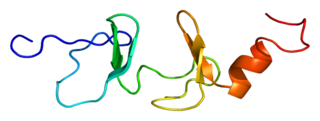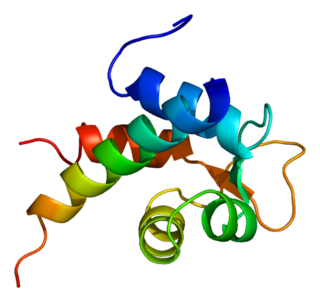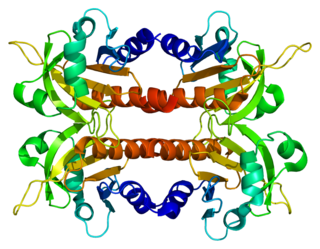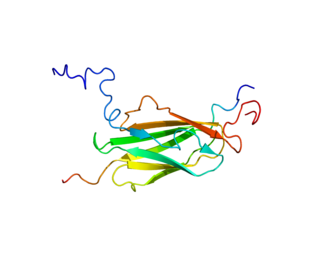| ZYX | |||||||||||||||||||||||||||||||||||||||||||||||||||
|---|---|---|---|---|---|---|---|---|---|---|---|---|---|---|---|---|---|---|---|---|---|---|---|---|---|---|---|---|---|---|---|---|---|---|---|---|---|---|---|---|---|---|---|---|---|---|---|---|---|---|---|
| Identifiers | |||||||||||||||||||||||||||||||||||||||||||||||||||
| Aliases | ZYX , ESP-2, HED-2, zyxin | ||||||||||||||||||||||||||||||||||||||||||||||||||
| External IDs | OMIM: 602002 MGI: 103072 HomoloGene: 31164 GeneCards: ZYX | ||||||||||||||||||||||||||||||||||||||||||||||||||
| |||||||||||||||||||||||||||||||||||||||||||||||||||
| |||||||||||||||||||||||||||||||||||||||||||||||||||
| |||||||||||||||||||||||||||||||||||||||||||||||||||
| |||||||||||||||||||||||||||||||||||||||||||||||||||
| |||||||||||||||||||||||||||||||||||||||||||||||||||
| Wikidata | |||||||||||||||||||||||||||||||||||||||||||||||||||
| |||||||||||||||||||||||||||||||||||||||||||||||||||
Zyxin is a protein that in humans is encoded by the ZYX gene. [5] [6] [7]
| ZYX | |||||||||||||||||||||||||||||||||||||||||||||||||||
|---|---|---|---|---|---|---|---|---|---|---|---|---|---|---|---|---|---|---|---|---|---|---|---|---|---|---|---|---|---|---|---|---|---|---|---|---|---|---|---|---|---|---|---|---|---|---|---|---|---|---|---|
| Identifiers | |||||||||||||||||||||||||||||||||||||||||||||||||||
| Aliases | ZYX , ESP-2, HED-2, zyxin | ||||||||||||||||||||||||||||||||||||||||||||||||||
| External IDs | OMIM: 602002 MGI: 103072 HomoloGene: 31164 GeneCards: ZYX | ||||||||||||||||||||||||||||||||||||||||||||||||||
| |||||||||||||||||||||||||||||||||||||||||||||||||||
| |||||||||||||||||||||||||||||||||||||||||||||||||||
| |||||||||||||||||||||||||||||||||||||||||||||||||||
| |||||||||||||||||||||||||||||||||||||||||||||||||||
| |||||||||||||||||||||||||||||||||||||||||||||||||||
| Wikidata | |||||||||||||||||||||||||||||||||||||||||||||||||||
| |||||||||||||||||||||||||||||||||||||||||||||||||||
Zyxin is a protein that in humans is encoded by the ZYX gene. [5] [6] [7]
Focal adhesions are actin-rich structures that enable cells to adhere to the extracellular matrix and at which protein complexes involved in signal transduction assemble. Zyxin is a zinc-binding phosphoprotein that concentrates at focal adhesions and along the actin cytoskeleton. Zyxin has an N-terminal proline-rich domain and three LIM domains in its C-terminal half. The proline-rich domain may interact with SH3 domains of proteins involved in signal transduction pathways while the LIM domains are likely involved in protein-protein binding. Zyxin may function as a messenger in the signal transduction pathway that mediates adhesion-stimulated changes in gene expression and may modulate the cytoskeletal organization of actin bundles. Alternative splicing results in multiple transcript variants that encode the same isoform. [7]
Zyxin has been shown to interact with:

Phosphatidylinositol 3-kinase regulatory subunit alpha is an enzyme that in humans is encoded by the PIK3R1 gene.

Protein tyrosine kinase 2 beta is an enzyme that in humans is encoded by the PTK2B gene.

Four and a half LIM domains protein 2 also known as FHL-2 is a protein that in humans is encoded by the FHL2 gene. LIM proteins contain a highly conserved double zinc finger motif called the LIM domain.

Sodium-hydrogen exchange regulatory cofactor NHE-RF2 (NHERF-2) also known as tyrosine kinase activator protein 1 (TKA-1) or SRY-interacting protein 1 (SIP-1) is a protein that in humans is encoded by the SLC9A3R2 gene.

Disintegrin and metalloproteinase domain-containing protein 12 is an enzyme that in humans is encoded by the ADAM12 gene. ADAM12 has two splice variants: ADAM12-L, the long form, has a transmembrane region and ADAM12-S, a shorter variant, is soluble and lacks the transmembrane and cytoplasmic domains.

Alpha-actinin-1 is a protein that in humans is encoded by the ACTN1 gene.

Vasodilator-stimulated phosphoprotein is a protein that in humans is encoded by the VASP gene.

Alpha-actinin-2 is a protein which in humans is encoded by the ACTN2 gene. This gene encodes an alpha-actinin isoform that is expressed in both skeletal and cardiac muscles and functions to anchor myofibrillar actin thin filaments and titin to Z-discs.

Alpha-actinin-4 is a protein that in humans is encoded by the ACTN4 gene.

Protein enabled homolog is a protein that in humans is encoded by the ENAH gene.

Thyroid receptor-interacting protein 6 is a protein that in humans is encoded by the TRIP6 gene.

Lipoma-preferred partner is a protein that in humans is encoded by the LPP gene.

Profilin-2 is a protein that in humans is encoded by the PFN2 gene.

Ena/VASP-like protein is a member of the Ena/VASP family of proteins that in humans is encoded by the EVL gene.

Beta-parvin is a protein that in humans is encoded by the PARVB gene.

PDZ and LIM domain protein 1 is a protein that in humans is encoded by the PDLIM1 gene.

LIM and SH3 domain protein 1 is a protein that in humans is encoded by the LASP1 gene.

Alpha-parvin is a protein that in humans is encoded by the PARVA gene.

Filamin-binding LIM protein 1 is a protein that in humans is encoded by the FBLIM1 gene.

αE-catenin, also known as Catenin alpha-1 is a protein that in humans is encoded by the CTNNA1 gene. αE-catenin is highly expressed in cardiac muscle and localizes to adherens junctions at intercalated disc structures where it functions to mediate the anchorage of actin filaments to the sarcolemma. αE-catenin also plays a role in tumor metastasis and skin cell function.